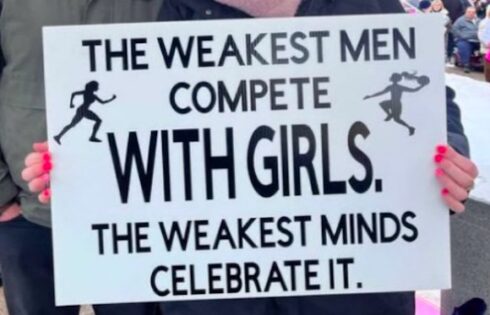
‘Whiteness … has permeated every aspect of librarianship’
Many people see libraries as citadels of knowledge and learning, but some scholars and academics are claiming that there is too much “whiteness” in them.
“Libraries in this country have always been white,” Louisiana State University School of Library and Information Science Professor Suzanne Stauffer told The College Fix in an email.
“Public and school libraries in particular have been a means of assimilation into white American middle-class culture. Founders of public libraries were quite explicit about this.”
One of the most popular efforts to remedy this perceived fault is the University of Wisconsin-Madison’s new bibliography, “Disrupting Whiteness in Libraries and Librarianship.”
The guide lists a plethora of sources regarding intersectionality and identity politics.
“This bibliography contains citations and links (when available) to resources focused on race, racism, and disrupting whiteness and white supremacy in libraries. Particular emphasis is placed on the field of library and information science and librarianship as a profession,” the introduction reads.
One of the sources to which the bibliography links is a journal article called “White Librarianship in Blackface: Diversity Initiatives in [Library and Information Science].”
“Whiteness…has permeated every aspect of librarianship, extending even to the initiatives we claim are committed to increasing diversity,” states the introduction of the article. The piece defines “whiteness” not as skin color exclusively, but as “an ideological practice that can extend beyond notions of racial supremacy to other areas of dominance.”
Author April Hathcock goes on to argue that diversity initiatives “are not making any meaningful difference.” Hathcock is a scholarly communications librarian at New York University.
“The normativity of whiteness works insidiously, invisibly, to create binary categorizations of people as either acceptable to whiteness and therefore normal or different and therefore other,” she writes. One example she lists is when “when a librarian of color is mistaken for a library assistant by white colleagues.”
Another paper that criticizes the whiteness of libraries is Stauffer’s paper, “Libraries Are the Homes of Books: Whiteness in the Construction of School Libraries.”
Stauffer’s paper defines whiteness as “the historical construction of Western society as an identity that is performed by those who identify as ‘white,’ rather than a skin color.”
A central exploration of Stauffer’s paper is that of a book titled “The Children’s Book on How to Use Books and Libraries,” a guide which instructs schoolchildren on how to navigate and collect research from books in libraries.
Stauffer notes that, of all the hand-drawn figures in the book, only two are not white. Those figures are a Chinese woman seated in a rickshaw and a Chinese man pulling her, both dressed in stereotypical Chinese garb.
She calls this depiction “an exoticization of the Other in general and of Asia in particular, presenting the inhabitants of other countries as foreign curiosities and their cultures as archaic if not primitive. It also suggests that the only place for non-Whites in the library is between the pages of the books.”
In her email to The Fix, Stauffer gave her recommendations on how libraries should look at stocking their shelves.
She wrote that librarians should “create and maintain a balanced collection of materials that represents as many perspectives as possible, and that reflects the community.”
“Everyone in the community should find materials that reflect their own experiences and that meet their needs. If the collection is unbalanced, librarians make a concerted effort to find materials that will bring it into balance.”
Stauffer also listed one scenario in which libraries should pull books off of shelves: “A library only withdraws materials when they no longer meet the needs of the community.”
Some universities are taking measures to rectify the apparent whiteness of libraries.
Harvard University is in the process of creating a new position, an “Associate University Librarian for Antiracism.”
St. John’s University released anti-racism plans in October which include a new “Anti-Racism Task Force” through the school’s libraries.
Nicole Cooke, an associate professor at the School of Library and Information Science at the University of South Carolina, wrote in Publishers Weekly last month that efforts to “Decolonize the Library” in general are an important part of the future.
“As librarians and publishers, we must have honest, direct conversations about anti-racism, equity, and inclusion, and acknowledge our roles as gatekeepers and in privileging Western norms,” Cooke wrote.
“We can no longer privilege the ‘canon’ or maintain the status quo. We must devote significant and substantive time to discussing the field’s diversity problems, our implicit biases, and the language we use. Specifically, we must reconsider how we think and speak about systemic racism and inequity and how that’s baked into the infrastructure of our society.”
MORE: Citing antiracism, university to cover up controversial murals in library
IMAGE: Vipman / Shutterstock
Like The College Fix on Facebook / Follow us on Twitter






Please join the conversation about our stories on Facebook, Twitter, Instagram, Reddit, MeWe, Rumble, Gab, Minds and Gettr.